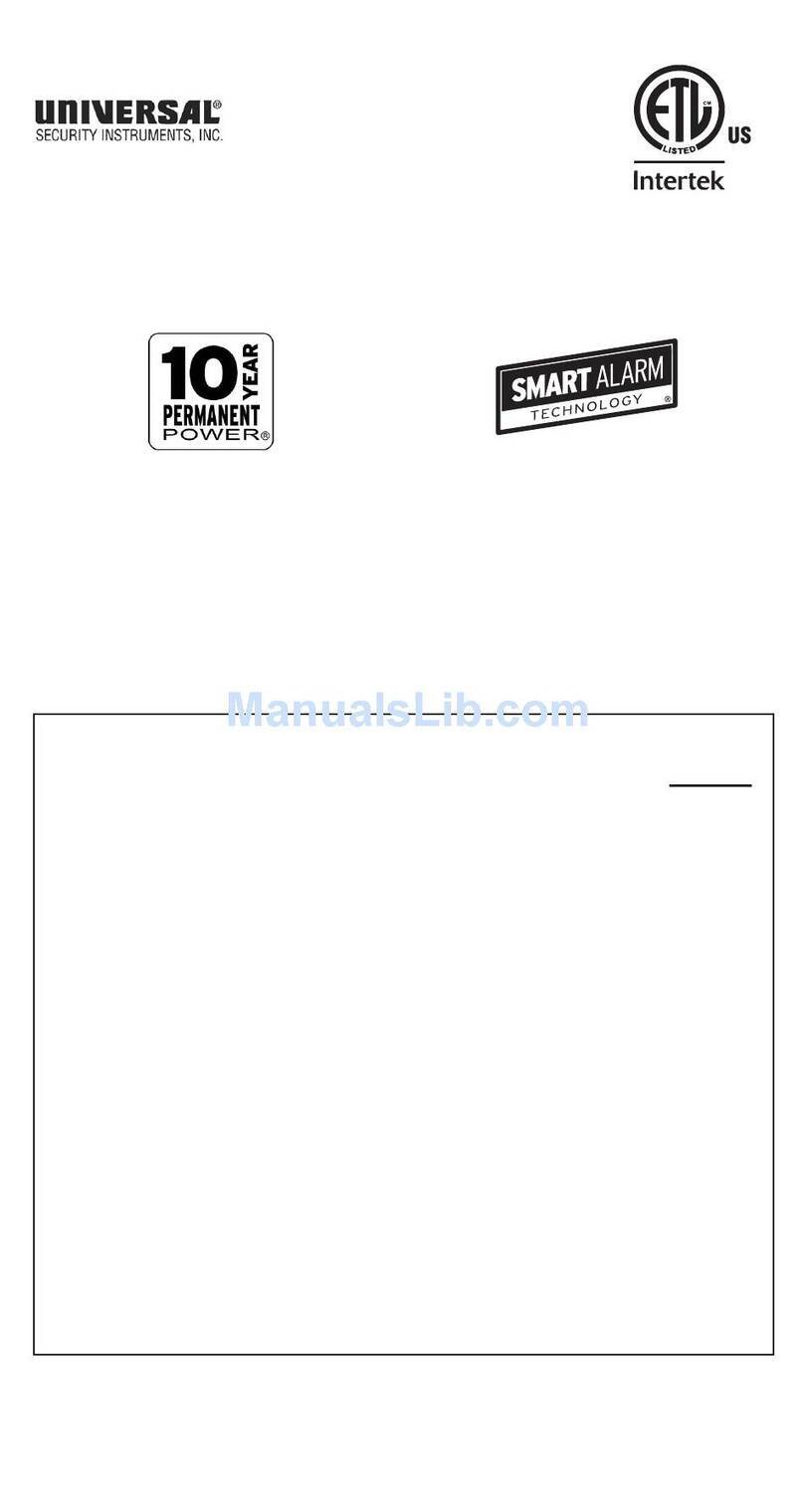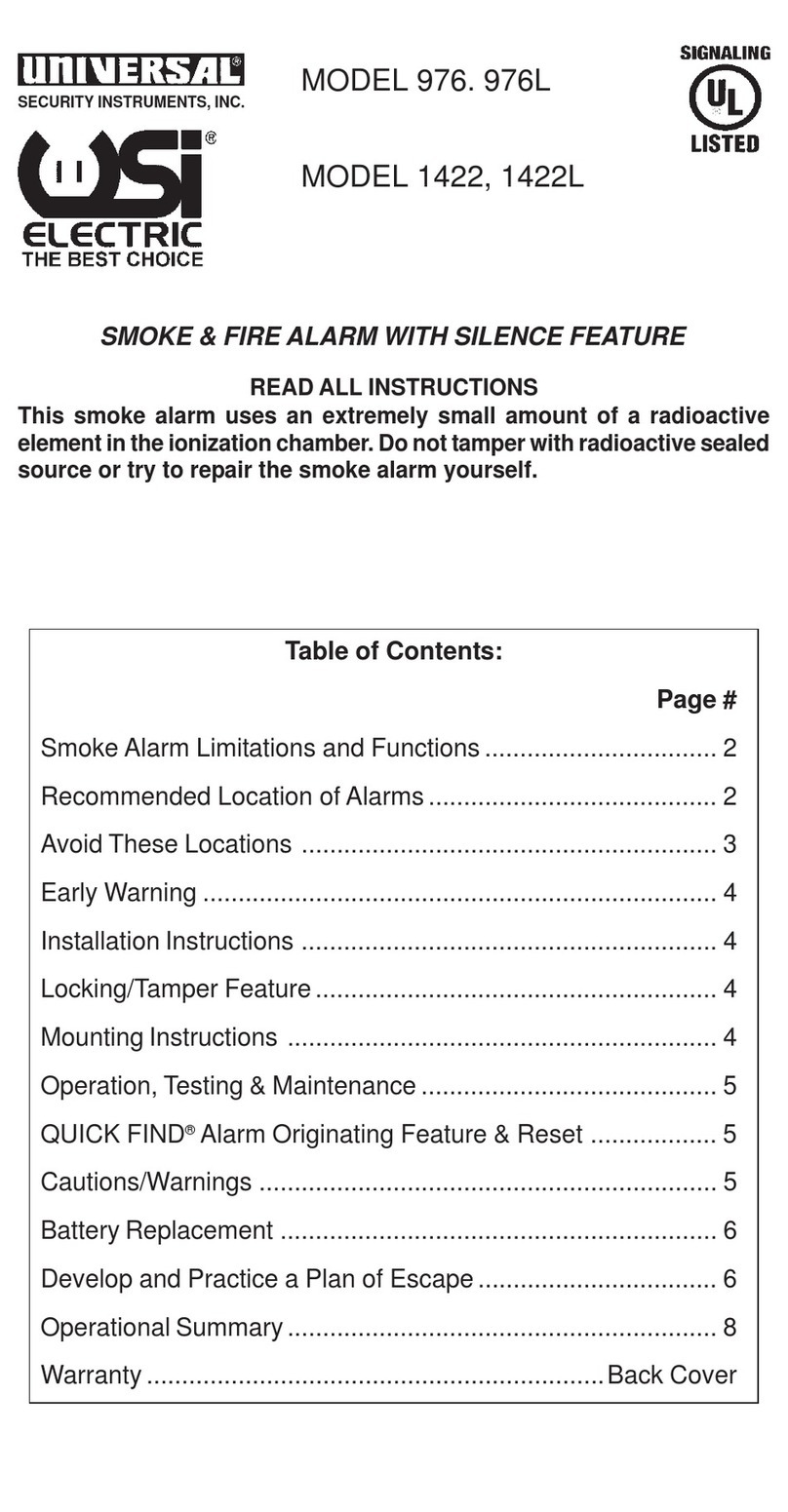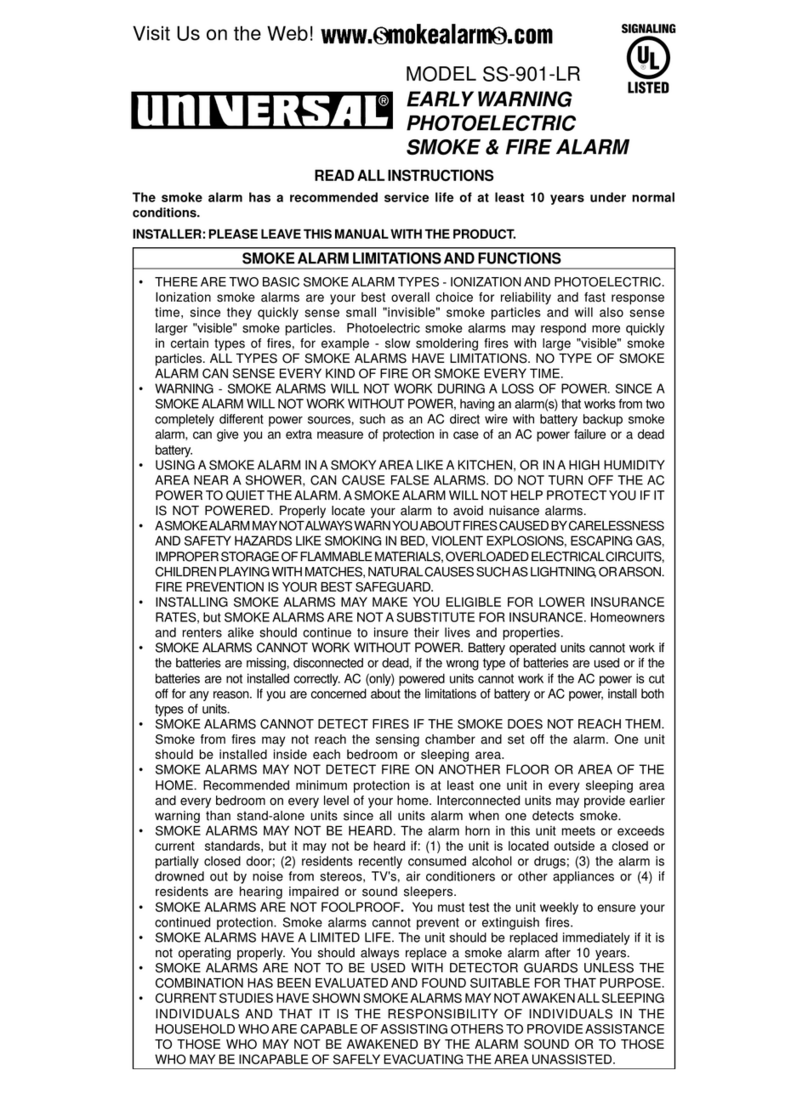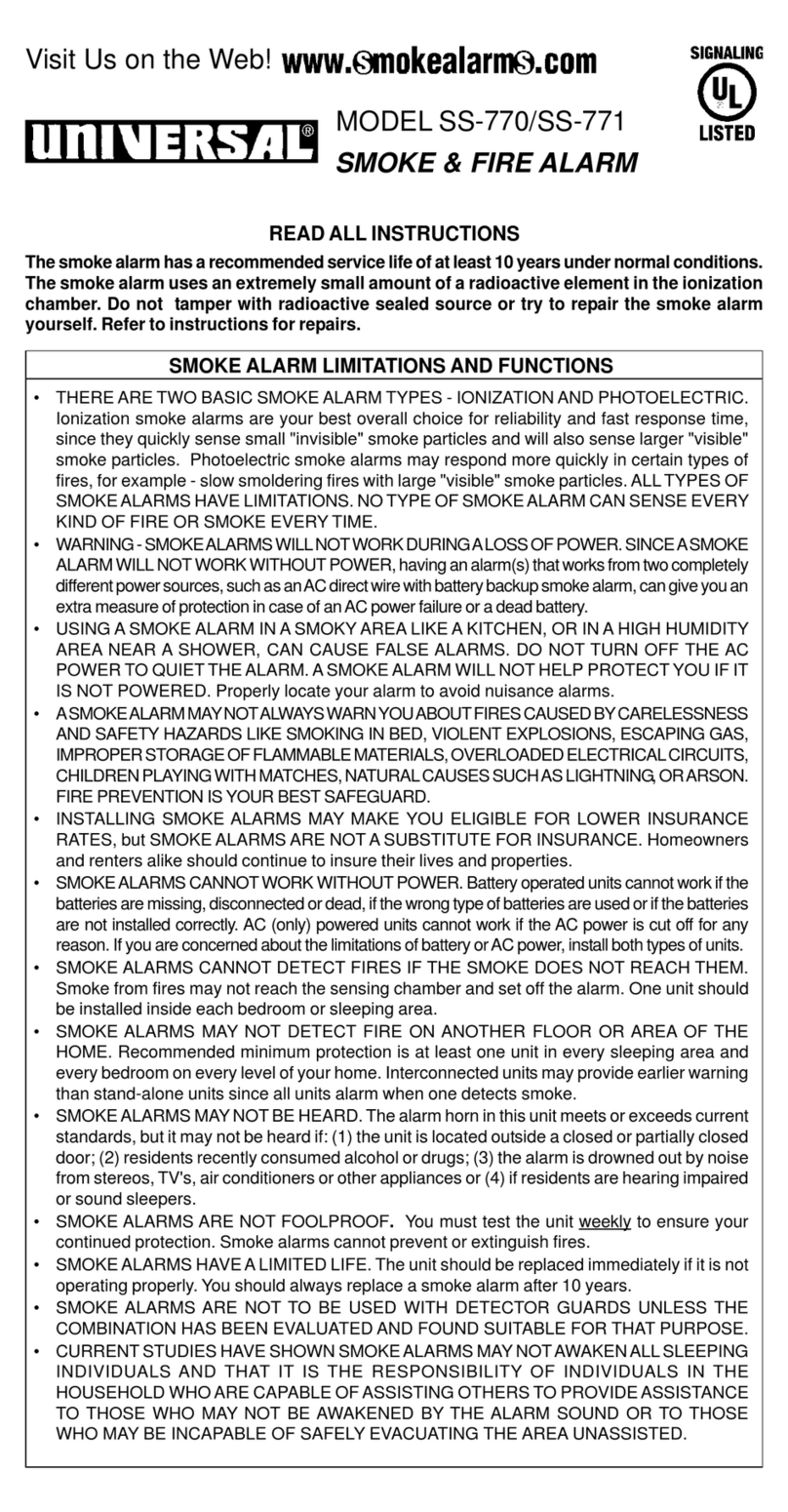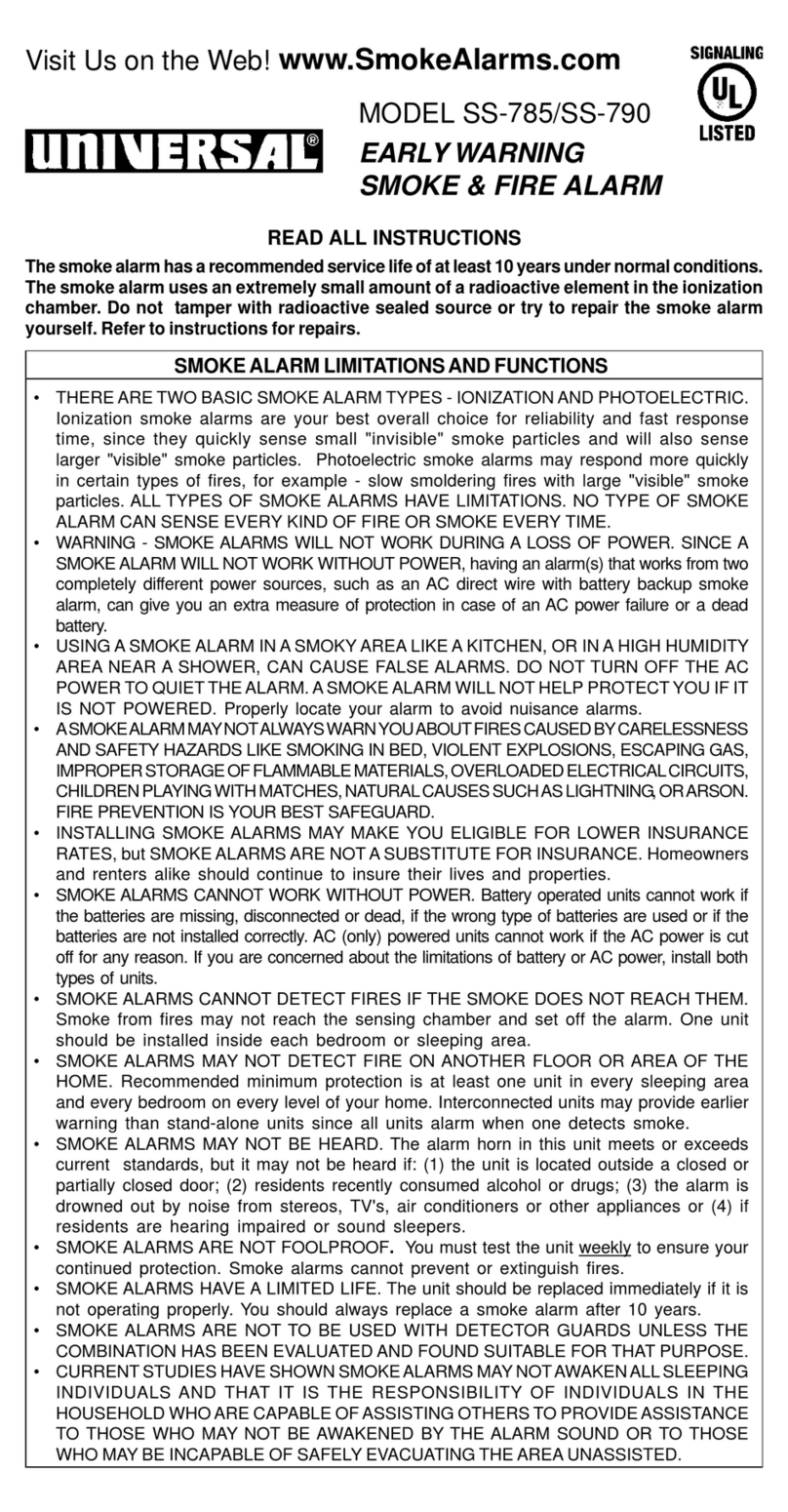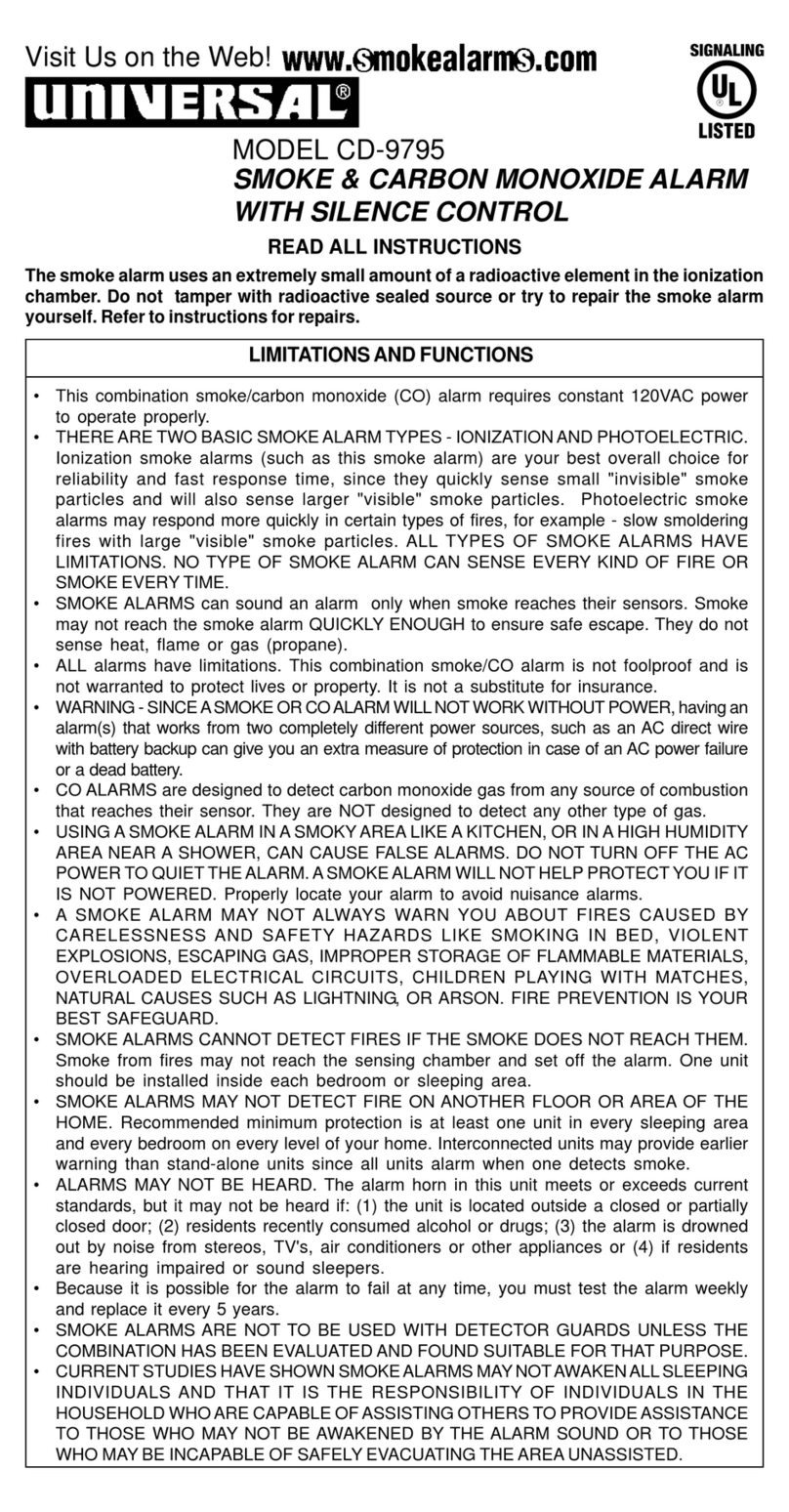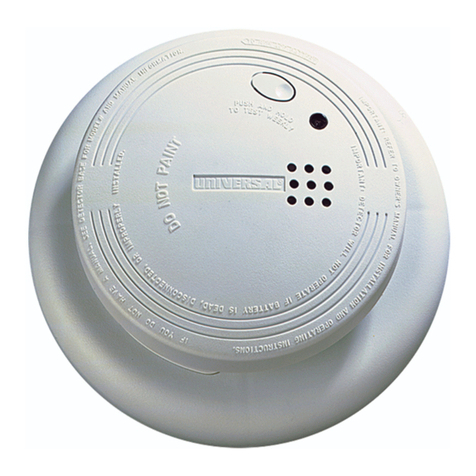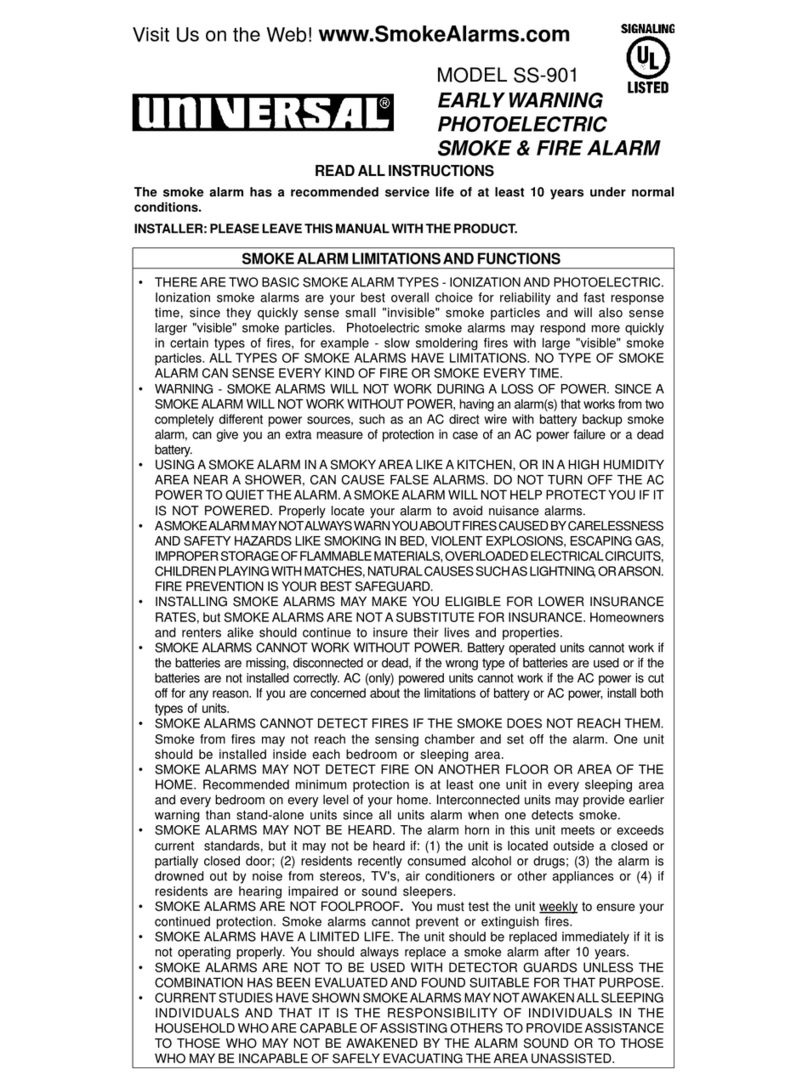
BACKUPBATTERYREPLACEMENT
Disconnect AC power before changing battery. Shock hazard exists if AC power is miswired.
The smoke alarm uses a 9 Volt battery. The battery should last for at least one year under normal
operatingconditions. The smoke alarm hasa low battery indicator, anaudible "beep." It will operateat 30-
40 second intervals for a minimum of 7 days. When this indication occurs, replace the battery with an
Alkaline type Eveready Energizer #522, Duracell #MN1604), Carbon-Zinc type (Gold Peak #1604P,
Eveready#216).UsetheconvenientQUICKDRAWTMpull-outbatterydrawerforeasybatteryreplacement.
Pull the QUICK DRAWTM battery drawer open and remove the battery. While observing polarity,
pushthe replacementbattery into the battery drawer until it is held securely in place. Carefully close
and latch the battery drawer. REPAIRSAND SERVICES
If the smoke alarm is defective in any way, do not tamper with the unit. Return the unit for
servicing. (See warranty for instructions or in-warranty returns.) There will be a service charge for
repairing out of warranty units.
Page 6
DEVELOP AND PRACTICE A PLAN OF ESCAPE
BASICS OF ESCAPE PLAN
o Make a floor plan indicating all doors and windows and at least two escape routes from each
room. Second story windows may need a rope or chain ladder.
o Have a family meeting and discuss your escape plan, showing everyone what to do in case of fire.
o Determine a place outside your home where all of you can meet if a fire occurs.
o Familiarize everyone with the sound of the smoke alarm and train them to leave your home when they
hear the sound.
o Identify children's bedrooms with red stickers placed in the upper left corner of the windows.
They are available from your local fire department.
o Practice a fire drill at least every six months. Practice allows you to test your plan before an
emergency. You may not be able to reach your children. It is important they know what to do!
WHAT TO DO WHEN THE ALARM SOUNDS
o Leave immediately by your plan of escape. Every second counts, so don't waste time getting
dressed or picking up valuables.
o In leaving, don't open any inside door without first feeling its surface. If hot, or if you see
smoke seeping through cracks, don't open that door! Instead, use your alternate exit. If
inside door is cool, place your shoulder against it, open it slightly and be ready to slam it shut
if heat and smoke rush in.
o Stay close to the floor if air is smoky. Breathe shallowly through a cloth, wet if possible.
o Once outside, go to your selected meeting place and make sure everyone is there.
o Call the fire department from your neighbor's home – not from yours!
o Don't return to your home until fire officials say that it is all right to do so.
NATIONAL FIRE PROTECTION ASSOCIATION REQUIRED PROTECTION
For your information, the National Fire Protection Association's Standard 72, reads as follows:
“11.5.1One-andTwo-FamilyDwellingUnits.11.5.1.1 Smoke Detection. Whererequired
by applicable laws, codes, or standards for the specified occupancy, approved single-
and multiple-station smoke alarms shall be installed as follows: (1) In all sleeping
rooms. Exception: Smoke alarms shall not be required in sleeping rooms in existing
one- and two-family dwelling units. (2) Outside of each separate sleeping area, in
immediate vicinity of the sleeping rooms. (3) On each level of the dwelling unit,
includingbasements.Exception: In existingone- and two-familydwellingunits, approved
smoke alarms powered by batteries are permitted.
“A.11.8.3AreMoreSmokeDetectorsDesirable?Therequirednumber of smoke detectors
might not provide reliable early warning protection for those areas separated by a door
from the areas protected by the required smoke detectors. For this reason, it is
recommended that the householder consider the use of additional smoke detectors for
those areas for increased protection. The additional areas include the basement,
bedrooms, dining room, furnace room, utility room, and hallways not protected by the
required smoke detectors. The installation of smoke detectors in kitchens, attics
(finished or unfinished), or garages is not normally recommended, as these locations
occasionally experience conditions that can result in improper operation.”
The equipment should be installed using wiring methods in accordance with the National Fire
ProtectionAssociation’sStandard72,Chapter11. (National FireProtectionAssociation, Batterymarch
Park, Quincy, MA 02269).
THIS PRODUCT IS LISTED TO UL STANDARD FOR SAFETY,
UL217, BY UNDERWRITERS LABORATORIES

